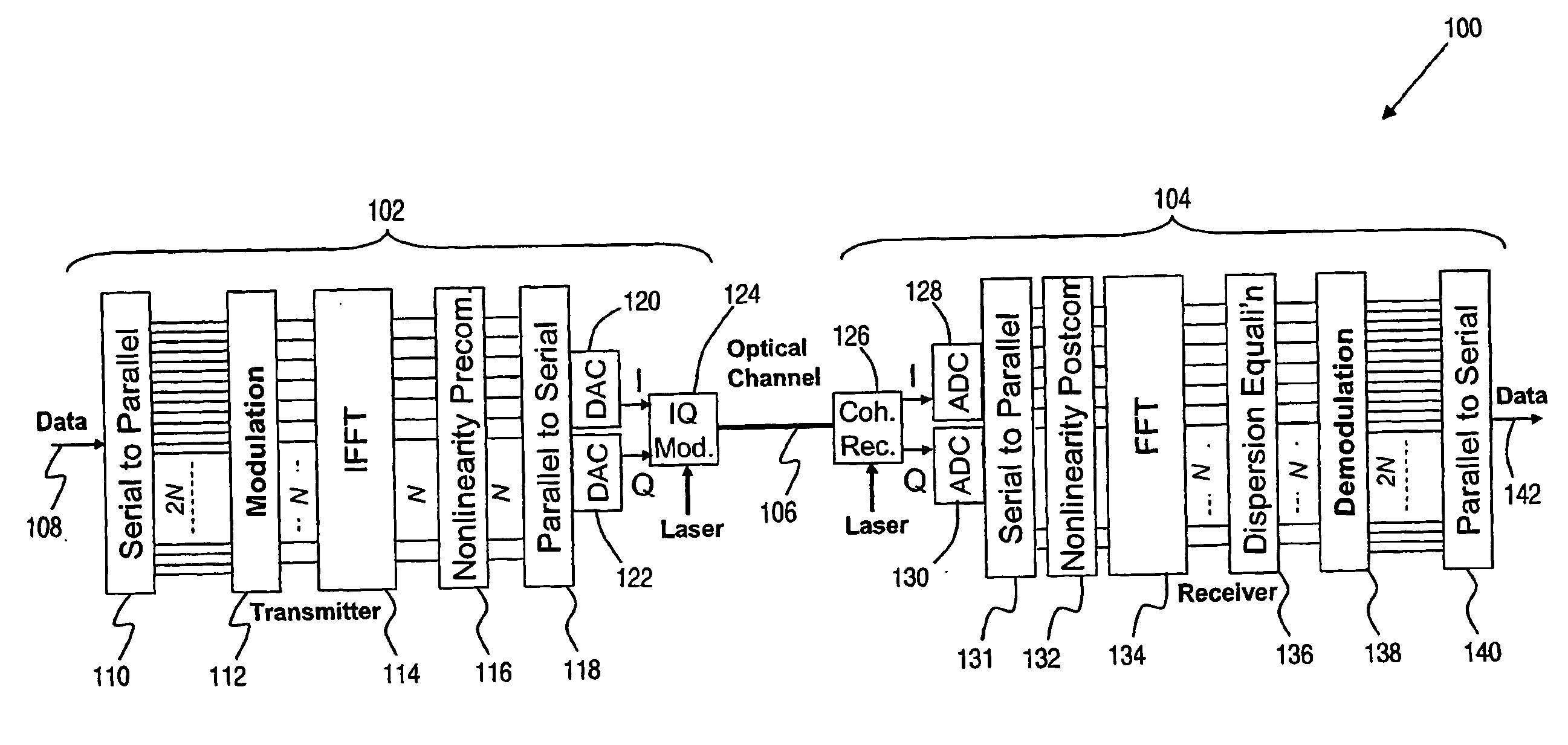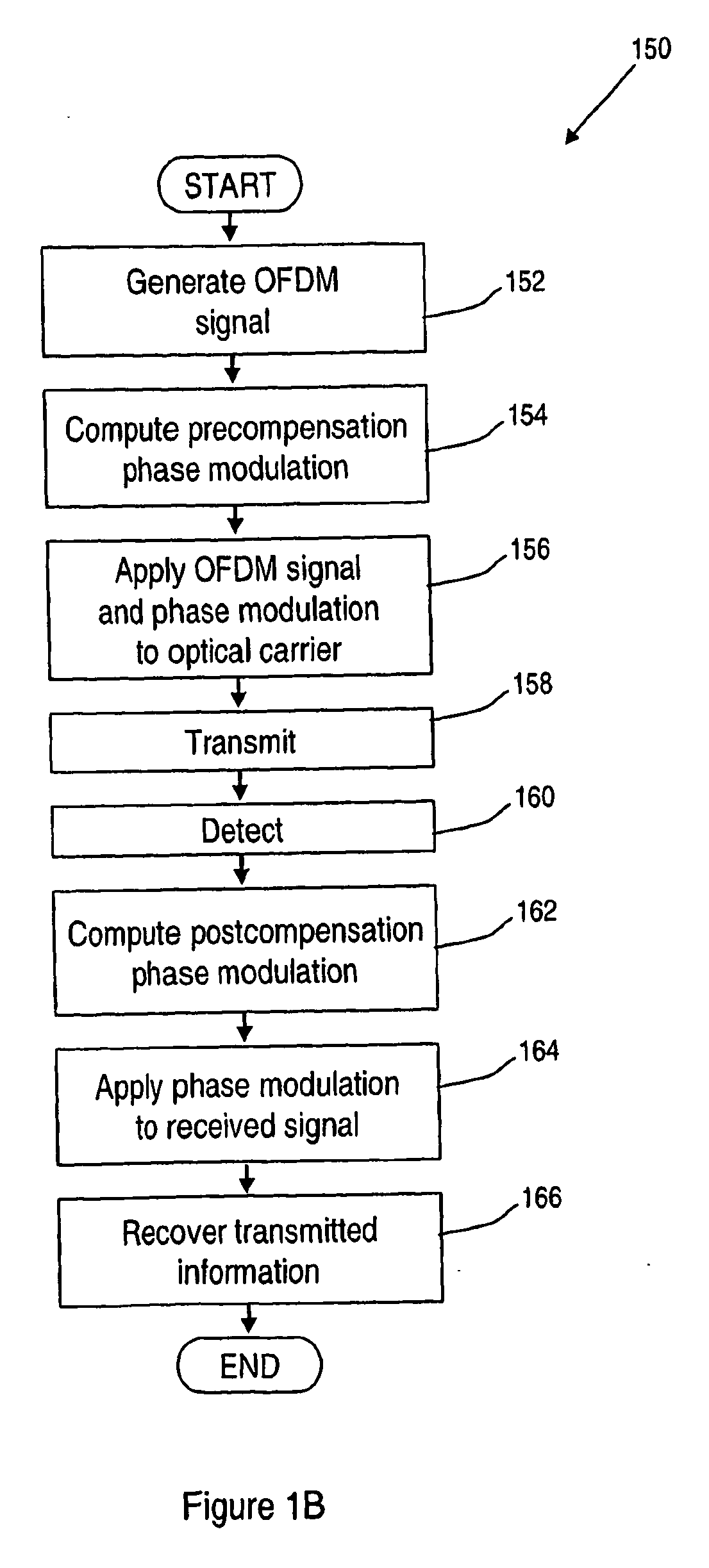Non-linearity compensation in an optical transmission
a technology of optical transmission and non-linearity compensation, applied in the field of optical communication, can solve the problems of limiting the distance over which data may be transmitted in single-mode optical fibres before some form of regeneration is required, affecting the overall non-linear compensation of optical channels, and affecting the quality of received signals, so as to improve the overall non-linear compensation, and reduce the effect of optical channel non-linearity
- Summary
- Abstract
- Description
- Claims
- Application Information
AI Technical Summary
Benefits of technology
Problems solved by technology
Method used
Image
Examples
Embodiment Construction
[0078]Turning first to FIG. 1, there is shown schematically a system 100 for communicating digital information over a non-linear optical channel according to a preferred embodiment of the present invention. While the invention is exemplified herein by the system 100, which employs orthogonal frequency division multiplexing (OFDM) in encoding and modulating digital signals for transmission over the optical channel, it is to be understood that the invention is not limited to this particular embodiment. Rather, embodiments of the invention are characterised generally by the generation of an information-bearing signal which includes a plurality of closely-spaced sub-carriers when represented in the frequency domain, the application of a time-varying phase modulation which is a function of a transmitted optical power characteristic corresponding with the information-bearing signal, and the application of the information-bearing signal and the time-varying phase modulation to an optical s...
PUM
 Login to View More
Login to View More Abstract
Description
Claims
Application Information
 Login to View More
Login to View More - R&D
- Intellectual Property
- Life Sciences
- Materials
- Tech Scout
- Unparalleled Data Quality
- Higher Quality Content
- 60% Fewer Hallucinations
Browse by: Latest US Patents, China's latest patents, Technical Efficacy Thesaurus, Application Domain, Technology Topic, Popular Technical Reports.
© 2025 PatSnap. All rights reserved.Legal|Privacy policy|Modern Slavery Act Transparency Statement|Sitemap|About US| Contact US: help@patsnap.com



